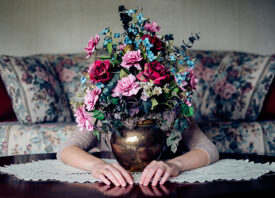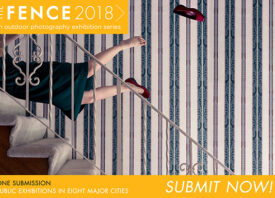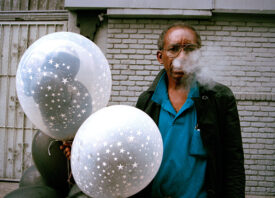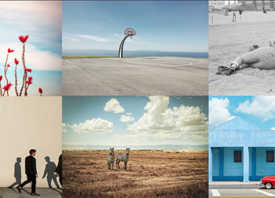Search this site
Surreal Portraits Explore the Dark Side

What would photography be if it didn’t have the power to unveil the mysteries of humanness through psychological exploration? New York-based photographer Brooke DiDonato is exploring the depths of unseen human emotion in her series, Drift—attempting to identify through stunning surreal compositions that make the human mind unravel. She spoke to us about the series, which will be presented in an exhibit at Brooklyn Fire Proof East opening this Thursday.

What was the impetus for Drift?
“Drift is an ongoing series I began in 2011 while interning as a photojournalist for the Lexington Herald-Leader in Kentucky. I spent that summer covering a variety of assignments ranging from news coverage to features and sporting events throughout the state. And even though each day presented a new and exciting opportunity to grow as a photographer, I felt a sense of unsettlement when I looked at the images I was making.
“I loved the practice of telling stories, but my images didn’t tell the stories I craved to share. What about the stories that can’t be seen? What about the illnesses that occur only in the mind? There is great importance in these issues as well, and these are the subjects I found myself growing increasingly more interested in. I began using my camera to shed light on these subjects, creating a series of images that walks the boundary between fact and fiction by embodying real narratives about vulnerability, mental illness and self-destruction with dream-like visual qualities. I’m not sure Drift will ever truly be finished. It’s a theme I think I’ll still be visiting in my work years from now.”

Is the darkness innate to your imagery a manifestation of a facet of your personality, a reaction to situations, or something entirely different?
“I once sat in on a lecture with Kent State University photojournalism professor David LaBelle in which he spoke about photographing the dark moments in life saying, “If you don’t tell these stories, who will?” That sense of moral obligation has always stuck with me. The darkness in my imagery comes from a feeling of duty and obligation. I think as members of society, we learn to compartmentalize the darkness and negativity of the world as a coping mechanism because it hurts, or because it’s difficult to understand.
“I feel like my responsibility as a photographer is to take that darkness and shape it into something visually appealing by giving it a voice. People identify with pictures. If you can bundle an important concept into an aesthetically appealing image, you can break barriers that words can’t. It can promote awareness, and hopefully with time, change.”


Some of your work has the quality of film stills. What is your process for staging scenes? Are you influenced by cinematography?
“Not in particular, however, there is certainly a similar sense of authenticity that I strive for when creating an image. Many of my photographs put you in the middle of a moment, with an implied beginning and end. My process for staging a scene usually begins with the location itself. After I’ve found the perfect setting, it’s just a matter of filling it with the appropriate subjects. Most of my models are people I know personally, so I always brief them on the exact mood and scene I’m attempting to create. It’s a collaborative effort, really. I may need the subject to repeat the same action or expression 50 times over before it feels authentic.”

What equipment do you shoot with? Do you often light scenes? What role/importance does Photoshop play in your surreal scenes?
“I shoot with a Nikon d7000 and a Sony RX1. For the past few months I’ve been sticking solely to the RX1 though. It’s a great little camera—small, compact, unobtrusive. I recently bought a fog machine which has been really fun to experiment with. It’s an effective, inexpensive way to manipulate available light and add texture or depth to a photograph without a crazy light setup.
“In the past year I’ve been making an effort to create my surreal effects completely in-camera by using more intricate setups and props. It’s been a great way to challenge myself and spend more time behind my camera instead of my computer. I’m moving away from Photoshop but I still do some compositing and expanding when necessary.”




